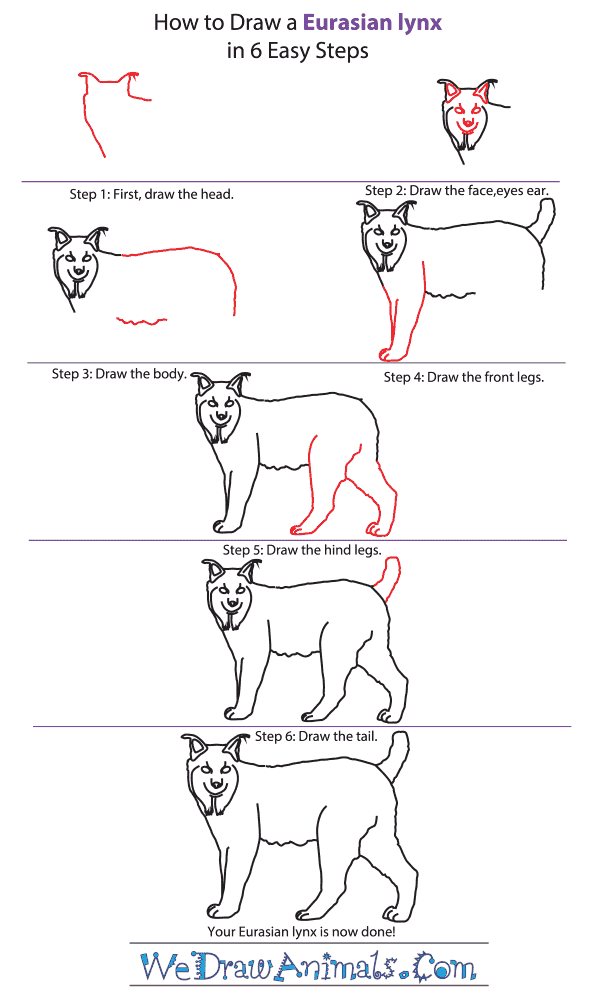In this quick tutorial you'll learn how to draw a Eurasian Lynx in 6 easy steps - great for kids and novice artists.
The images above represent how your finished drawing is going to look and the steps involved.
Below are the individual steps - you can click on each one for a High Resolution printable PDF version.
At the bottom you can read some interesting facts about the Eurasian Lynx.
Make sure you also check out any of the hundreds of drawing tutorials grouped by category.
How to Draw a Eurasian Lynx - Step-by-Step Tutorial
Step 1: First let's draw our lynx's head. Get the ears and curve down to the neck and chest. Add some fur frills at the ears.
Step 2: Let's detail the face. In the ears draw a triangle. Give the lynx some mustachios under its nose and smiling lips.
Step 3: Now draw the body. Draw a straight line for the back and curve it at the end for its hind legs. For the belly draw some quick squiggly lines for the belly fur. Draw the forelegs, connecting the head with the belly.
Step 4: Draw the forelegs, connecting the head with the belly. Let's move to the hind legs. These will be thicker than the forelegs because these are what the lynx uses to jump high and run fast!
Step 5: Let's move to the hind legs. These will be thicker than the forelegs because these are what the lynx uses to jump high and run fast!Let's draw the tail, this should be a curved hot dog shape.
Step 6: Let's draw the tail, this should be a curved hot dog shape.
Interesting Facts about the EURASIAN LYNX
The Eurasian Lynx is a member of the cat family and the scientific term for them is Lynx lynx. Their ear hair is long for warmth and the paws are wide for staying on top of the snow. The toes are webbed to allow an enhanced function like snowshoes.
Did you know?
- The adult reaches a size of over 4 feet long.
- The tail alone is usually only 5 inches long.
- This species can weigh almost 100 pounds.
- They require over 4 pounds of meat per day.
- There are individuals that have killed deer weighing 330 pounds.
- The animal has a hunting range of up to 174 square miles.
- This species may travel up to 12 miles in one night.
- They have blind babies that stay in the nest for over 2 months.
They’re native to Europe and Asia with light brown bodies and black spots. Their diet consists of mammals and birds of a very large variety that are stalked in the preferred habitat of forests. Predators of this species include wolves, wolverines, and tigers. These cats are silent except for mating season, where the male will growl and the female will “meow.”







